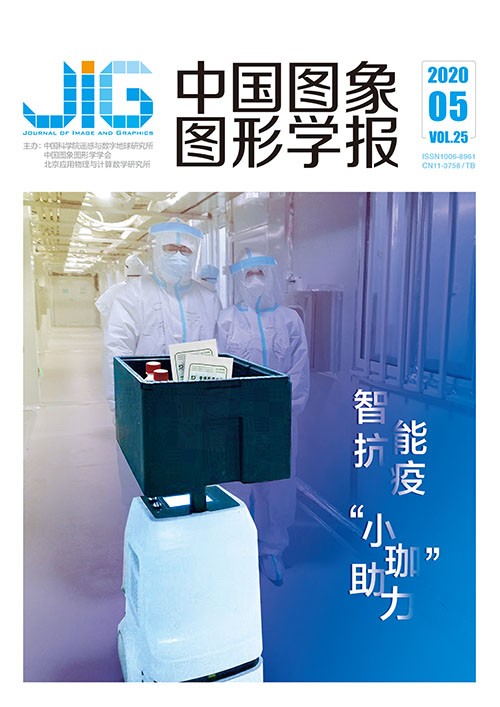
多源空—谱遥感图像融合方法进展与挑战
摘 要
多源空—谱遥感图像融合方法作为两路不完全观测多通道数据的计算重构反问题,其挑战在于补充信息不足、模糊和噪声等引起的病态性,现有方法在互补特征保持的分辨率增强方面仍有很大的改进空间。为了推动遥感图像融合技术的发展,本文系统概述目前融合建模的代表性方法,包括成分替代、多分辨率分析、变量回归、贝叶斯、变分和模型与数据混合驱动等方法体系及其存在问题。从贝叶斯融合建模的角度,分析了互补特征保真和图像先验在优化融合中的关键作用和建模机理,并综述了目前若干图像先验建模的新趋势,包括:分数阶正则化、非局部正则化、结构化稀疏表示、矩阵低秩至张量低秩表示、解析先验与深度先验的复合等。本文对各领域面临的主要挑战和可能的研究方向进行了概述和讨论,指出解析模型和数据混合驱动将是图像融合的重要发展方向,并需要结合成像退化机理、数据紧致表示和高效计算等问题,突破现有模型优化融合的技术瓶颈,进一步发展更优良的光谱信息保真和更低算法复杂度的融合方法。同时,为了解决大数据问题,有必要在Hadoop和SPARK等大数据平台上进行高性能计算,以更有利于多源数据融合算法的加速实现。
关键词
Progress and challenges in the fusion of multisource spatial-spectral remote sensing images
Xiao Liang1, Liu Pengfei2, Li Heng1(1.School of Computer Science and Engineering, Nanjing University of Science and Technology, Nanjing 210094, China;2.School of Computer Science, Nanjing University of Posts and Telecommunications, Nanjing 210023, China) Abstract
With the rapid development of earth observation technology, remote sensing opens up the possibility of multiplatform, multisensor, and multiangle observation, and the acquisition ability of multimodal datasets in a joint manner has been considerably improved. Extensive attention has been given to multisource data fusion because such technology can be used to improve the performance of processing approaches with respect to available applications. In this study, we focus on reviewing state-of-the-art multisource remote image fusion. Three typical problems, namely, pansharpening, hypersharpening, and the fusion of hyperspectral ands multispectral images, have been comprehensively investigated. A mathematical modeling view of many important contributions specifically dedicated to the three topics is provided.First, the major challenge and complex imaging relationship between available multisource spatial-spectral remote sensing images are discussed. As an inverse problem of recovering the latent high-resolution image from two branches of incomplete observed multichannel data, the challenge lies in the ill-posed condition caused by insufficient supplementary information, optical blur, and noise. Therefore, the existing data fusion method still has considerable room for resolution enhancing with complementary information preserving capacity. Second, a comprehensive survey is conducted for the representative mathematical modeling paradigms, including the component substitution scheme, multiresolution analysis framework, Bayesian model, variational model, and data- and model-driven optimization methods, and their existing problems. From the point of view of Bayesian fusion modeling, this study analyzes the key role and modeling mechanism of complementary features, preserving data fidelity and image prior terms in the optimization model. Then, this work summarizes the new trends in image priori modeling, including fractional-order regularization, nonlocal regularization, structured sparse representation, matrix low rank, tensor representation, and compound regularization with analytical and deep priors. Lastly, the major challenges and possible research direction in each area are outlined and discussed. The hybrid analytical model and data-driven framework will be important research directions. Breaking through the technical bottleneck of existing model optimization-based fusion methods with the imaging degradation model, data compact representation, and efficient computation, and developing fusion methods with improved spectral-preserving performance and reduced computational complexity are necessary. To cope with the big data problem, high-performance computing on big data platforms, such as Hadoop and SPARK, will obtain promising applications for multisource data-accelerated-based fusion.
Keywords
image fusion pansharpening inverse problem regularization model optimization data driven deep learning
|



 中国图象图形学报 │ 京ICP备05080539号-4 │ 本系统由
中国图象图形学报 │ 京ICP备05080539号-4 │ 本系统由